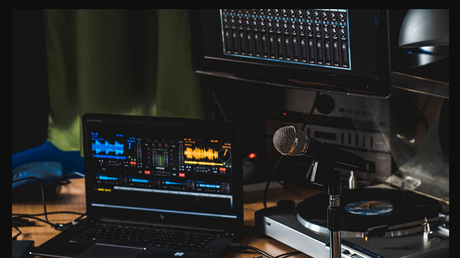
You can record your speech just by talking into your cell phone, but the quality you will get from the best voice recording software far outweighs that which you will get from that tinny microphone.
You also get much more in the way of features and control by using dedicated software. Getting a high-quality stream is essential, so make sure you are using a good quality microphone in a quiet place. Many of the best voice recording apps have filters that can screen out background noise, but it is best to ensure that it is not there to begin with.
Other features to look out for include voice-activation, and scheduled capture times. The app needs to be compatible with the input you are planning to use, and should be able to export the recorded audio to a variety of common file types - including the one you need to use for your project.
Free software is available, and does a good job, but more advanced programs are available for one-off payments or even a subscription. It is well worth looking through the features lists of these applications to see if there is something there that you just cannot live without, as sometimes you only get one chance to record something special.

A great value voice recorder that is very simple to use.
Despite being open-sourced and free, Audacity has held its own for years amongst other pricy options within the audio recording software industry. Its availability for Mac OS X, Windows and Linux has the more OS compatibility than any of the paid options. Its clean interface is approachable even for the most novice of users. Beware, however, that Audacity's bare-bones design is geared more for users wanting to create vocal audio for a podcast, rather than multi-track music created from samplers, loops and MIDI instruments. Overall, though, Audacity is an immense value, especially for anyone wanting to try out a program like this before dropping serious cash.
Do not be fooled by Audacity's simplistic interface; within a few minutes of tinkering, you can easily find a battery of features and controls. The program makes it easy to connect and set up external equipment, record, edit and mix tracks, and polish your work before exporting it. You have access to tools for adjusting things like treble and bass, and even frequency analysis. The largest downside of the program, however, is that it makes use of destructive editing, which means that any changes you make on your track alter its actual waveform - the original file - and you cannot undo them later.
Prоs
Completely free
Works on any operating system
Simple interface but is feature-rich
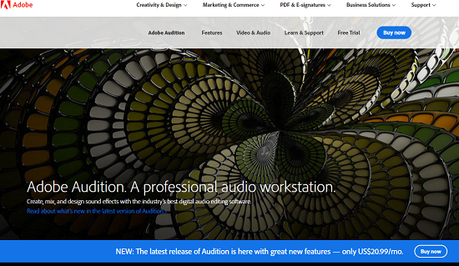
Audition is Adobe's podcast creation app, available as a standalone subscription or as part of the full Creative Cloud suite of apps. Those who have been in the business a long time may remember Cool Edit Pro, an app admired for its simplicity and large number of features. Audition is the spiritual successor to that app, created after Adobe bought Syntrillium in 2003.
Audition is geared toward podcast production rather than musical use, but there is no reason it could not be used for that even though there's no MIDI support - you can still import samples. Adobe's DAW offers single- or multi-track editing, but clicking on a track isolates it from the others so you can work on it, say to clean up background hum. Adobe's clever adaptive noise reduction makes this simple - you select a quiet section of the track, and Audition uses this reference to clean the track of the frequencies causing the hum.
For anyone who is already a subscriber to the Creative Cloud suite, it is possible you already have Audition, tucked away in the folder of apps you do not access very often. It is a high-quality toolset for audio engineering and fixing up tracks for podcasts and even broadcast, but if you are looking for something for music production work, then there are better options elsewhere.
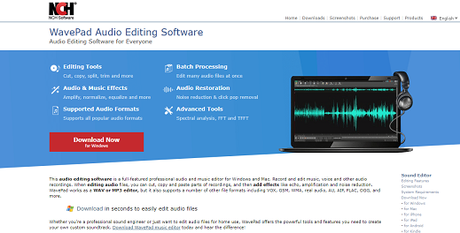
WavePad is intuitive and powerful voice recording software that is simple enough for a novice to use. It is compatible with a multitude of audio file formats and gives you the option to convert files to an equally large array of audio formats. The program can mix and split audio files, edit silences, reduce or eliminate background noise, integrate filters and special effects, and even convert a mono audio file into stereo.
The program's layout is clean and intuitive, and meant to encourage a smooth workflow. It does an impressive job of balancing all of its features without hurting its usability. Toolbars within change as you click on different tabs, keeping features and functions organized. It lets you customize the toolbar to include or remove any tool and configure many other features to create an optimal workspace.
WavePad comes with tons of effects and filters, which can be applied manually or set automatically. Whether you want to add distortion, reverb or a delay to your latest song, or you need to amplify, reverse, fade out or otherwise tweak and equalize your tracks, WavePad makes it easy to do that. In addition, if you need to convert a file to a different format that is compatible with your gear, such as to MP3, you can quickly do so.
Prоs
Has over 20 filters and audio effects
Extremely easy to use
Compatible with all common file formats.
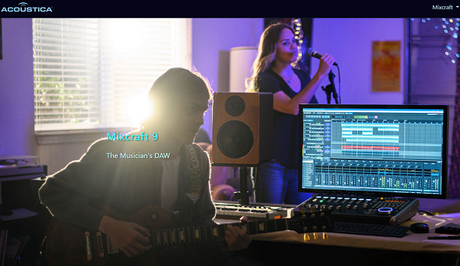
Although Mixcraft 8 is easy, enough for people of any experience level to use, the recording application looks and works like a digital audio workstation and has an intimidating-looking interface. However, after tinkering for a few minutes, anyone can see that the software is powerful and full of features to help you not only record your audio but also edit, enhance and burn it as well. In addition, while it is the priciest program we tested, it is the most versatile and a great option for those focusing on audio engineering and music recording.
Mixcraft is stocked with an arsenal of over 7,800 loops, special effects, filters, digital instruments and samplers. It also boasts unlimited submix nesting, allowing you to tweak each track perfectly. All of the standard effects and editing functions are available to you, including an equalizer as well as fade and reverb options. It can reduce or eliminate unwanted background noise, remove pops and clicks, and edit silences in your tracks. There is no option for converting a mono audio file to stereo. You can set a recording timer; however, the biggest downside to this particular program is that it does not have a voice-activated recording option. There is also no ripping or burning option.
Prоs
Advanced abilities like pitch correction and plug-in support
Over 7,800 loops, samples and effects
Integrated recording timer for defined sessions.
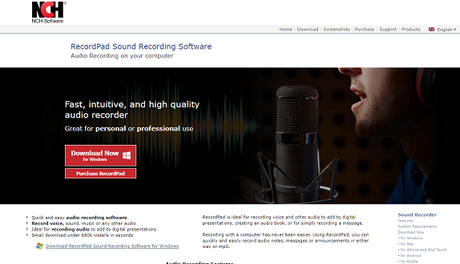
Though RecordPad is technically part of a larger range of digital audio applications from NCH Software, it runs as a standalone recording tool capable of supporting audio feeds from multiple channels.
You can use the other programs to complement and enhance RecordPad's abilities, however. The software supports audio input from all sources using default application settings and the "loop cable" method, and it allows you to capture audio from internet streaming sources, a line-in device or computer playback.
With this recording software, you can record, rip or burn audio, and schedule future recordings, though you may need to enable a plugin for editing, conversion and burning functions. If you want to edit or add effects to your audio, you will have access to noise reduction, reverb, pop and click removal, equalizing and fade among other abilities. However, keep in mind that the program's weak point is its limited file format compatibility. It is only compatible with WAV, MP3 and FLAC, unlike other programs that include several others.
Cоns
No option for changing file format
Most of the voice recording programs in our comparison come bundled with all the required tools and features needed to perform several tasks, including audio input, editing and output. There are a number of aspects you should consider while evaluating your voice recording options. Below are the features and criteria we looked at to compare the best voice recording software:
Audio Feed/Input Source for Capture
Recording is traditionally done using a microphone and line-in jacks located on the audio interface panel of the computer system. However, more advanced software also supports audio pick-up from media playback; CD, VCD, DVD, USB devices; internet streaming; phone recording or any audio playback by sound card. Essentially, you can record any audio being played by or through the computer. The best recording applications understand this and already have the ability to work with you if you need to work with other input sources. Consider your current input methods - and any you plan to use in the future - before choosing an application.
Record/Rip/Burn Features
A few additional features are essential to the recording and sharing process. For example, recording timers and schedulers let you define the period of a particular session, ensuring that your recordings start and end exactly when you need. Similarly, voice-activated recording automates the start of a recording session whenever a predefined level of audio signal (decibels) is registered by the software. All of these can make it a little easier to record things like a podcast or a college lecture without wasting space on your computer's hard drive.
A program with both digital and analog ripping offers the most versatility for a variety of needs. Digital ripping is useful when recording digital media and you need analog ripping with copy-protected digital media that cannot be ripped conventionally. Both are handy methods to digitize your aging CD or DVD collection, for example. Burn tools are used for saving files to optical media for storage and playback.
Filters, Effects and Editing
Most of the time, simply recording the audio is not enough; you may want to enhance the recording or edit the files before releasing your finalized product. You might need to edit a silence, add a filter or special effect, or manage background noise. Most programs can handle standard editing needs, but the best applications can handle whatever you throw at them.
Many programs let you trim or insert a silence in an audio track or file, which typically smooths out the flow of a recording or makes it easier to add music or other effects later. Special effects like Sound Warmer, Bass Boost or Echo can also be applied to further enhance or achieve a particular audio effect. Whether you are using filters and effects to enhance clarity or for fun voice morphing, a good set of filters is an essential component of voice recording software. Some programs - typically those with a DAW interface - offer far more effects and editing options, as they are closer to the software that studio audio engineers use.
A program with a noise reduction function can mostly or completely eliminate background noise interfering with your actual recording, such as your air conditioner, refrigerator or a vacuum. Any program worth its weight will also have a pop and click removal option for handling additional unwanted noise. Although a frequent problem, pops and clicks can come from a variety of sources and often be fussy to track down and resolve. Therefore, having a program that automatically monitors and limits that is essential, especially if you do not have the extra dough to purchase things like a pop filter or a more powerful CPU for your computer.
Options to change a file format and size are also useful and are often used to output files in the desired audio quality, typically to MP3. An integrated ID3 tag editor is also useful to label files appropriately for better organization for archiving and future searches.
Supported Formats
If the software cannot manage or play all of your audio files, what good is it? While most voice recording suites are compatible with only a few of the most common audio file types - MP3, WAV, WMA - others go the extra mile and support additional file types, like FLAC and AAC, as well as file compression and converting. Top programs are not only compatible with a wide variety of file formats but are also adept at importing and exporting files.
Ease of Use
Recording your voice - or any audio, for that matter - on your computer can be difficult when you factor in things like choosing and setting up hardware or searching for the right software application to use. However, it does not have to be, and choosing the best voice-recording program can make things much easier. From installation to implementation to actual use, the entire process of voice recording should be straightforward and simple.
Help & Support
A good help and support system is essential for a speedy and trouble-free learning experience, and further instilling confidence in the user. Help files, manuals, FAQs and tutorials address day-to-day issues, whereas phone support, email, live chat and forums are best for solving specific issues. The best developers host a full array of informational resources on their website and provide multiple ways to contact their technical support teams directly.
You may have heard the terms "voice recording software" and "DAW" used interchangeably, but it is important to know their similarities as well as how they differ. By learning more about these types of software, you can be better informed to make the best choice for your needs.
Voice recording software is the simpler of the two. You can record audio manually or set the program to run on a schedule or be triggered by sound over a certain decibel level. Afterward, you can edit the audio with special effects. In addition, this type of program has tools you can use to trim files, eliminate unwanted background noise and export. Voice recording software works on a laptop or desktop computer, and some programs even have compatible mobile apps you can use while you are on the road. This is also the cheaper of the two types of software, making it a great choice for those on a budget as well as anyone not using it for professional audio production.
A digital audio workstation (DAW) is a more heavy-duty version of voice recording software. This kind of software can handle more inputs and tracks, has wider file format compatibility, and generally produces higher quality audio files. Because DAWs are more powerful, they cost more and are predominantly made for audio professionals. As such, they have steep learning curves. However, once you get a handle on how to use the software, and especially if you can afford quality recording hardware in addition to it, you can churn out beautiful, complex audio tracks worthy of a Grammy.
